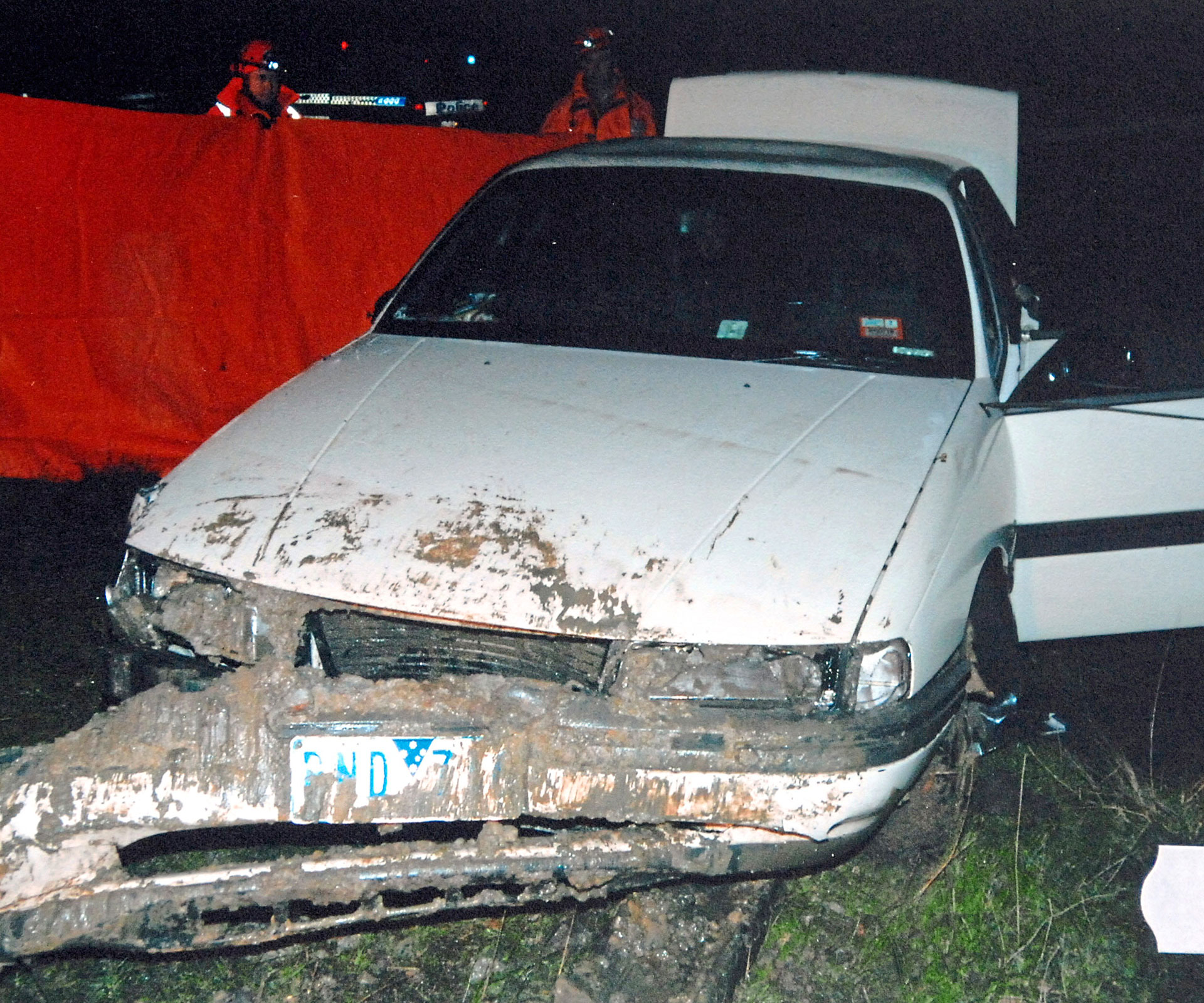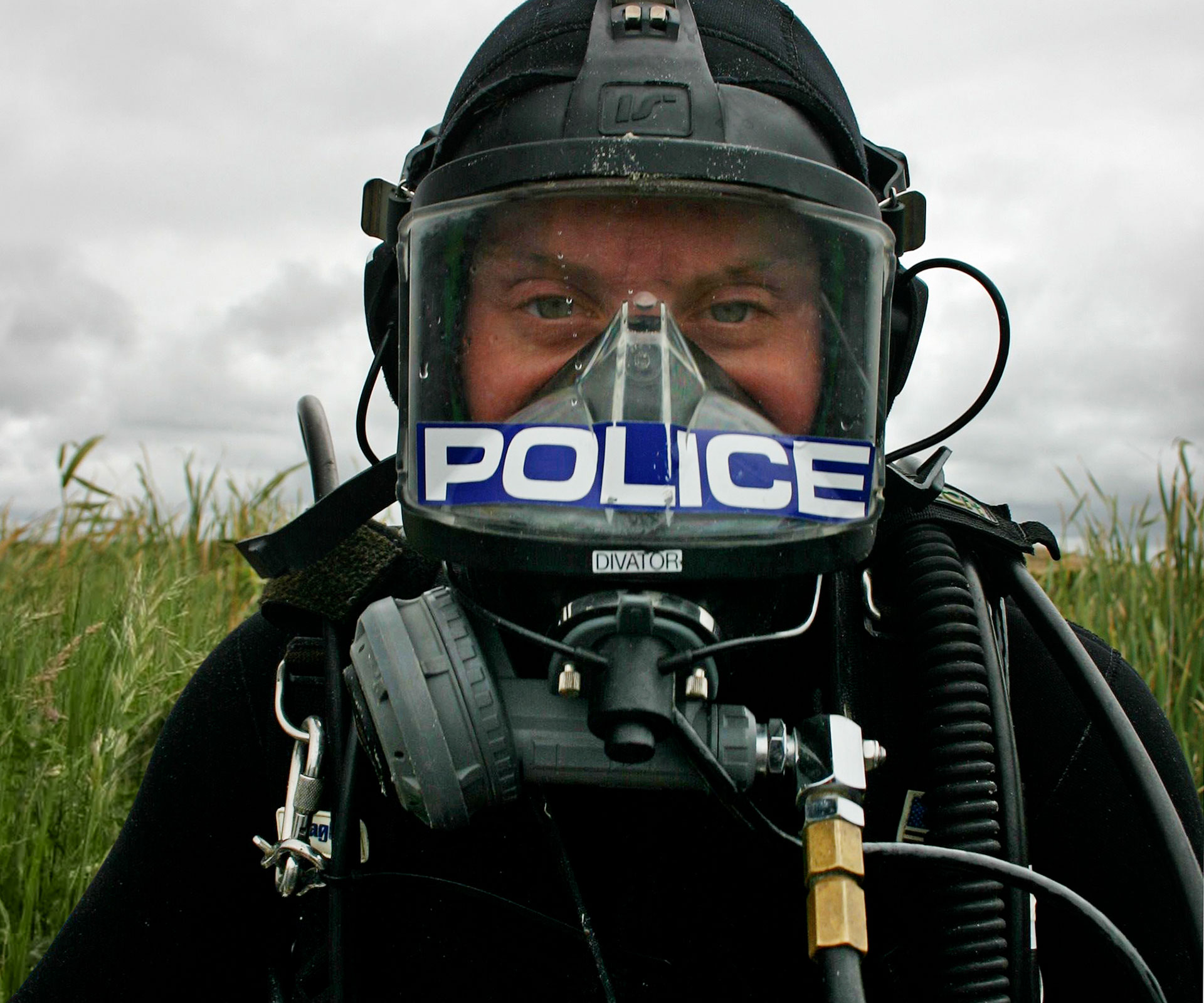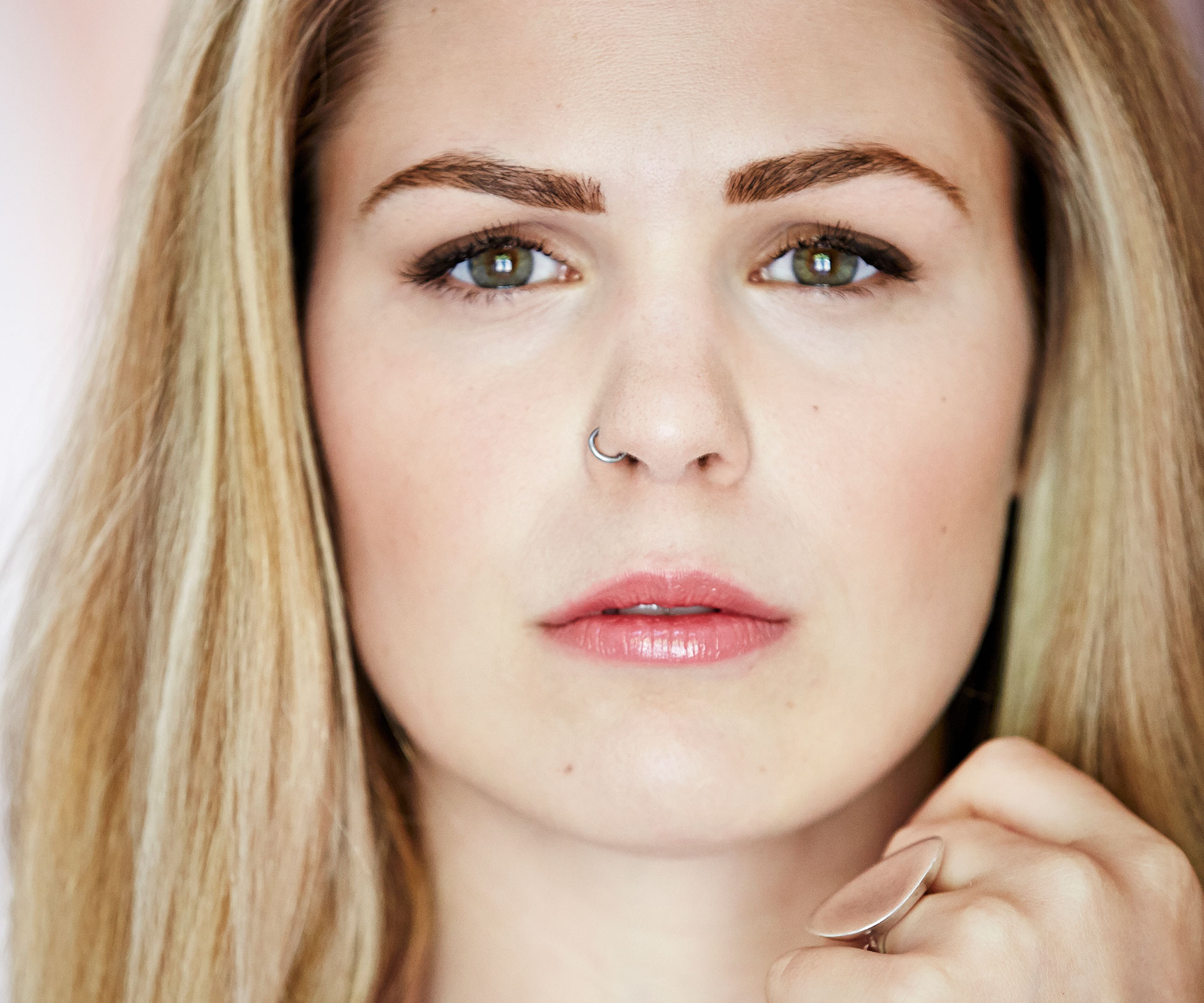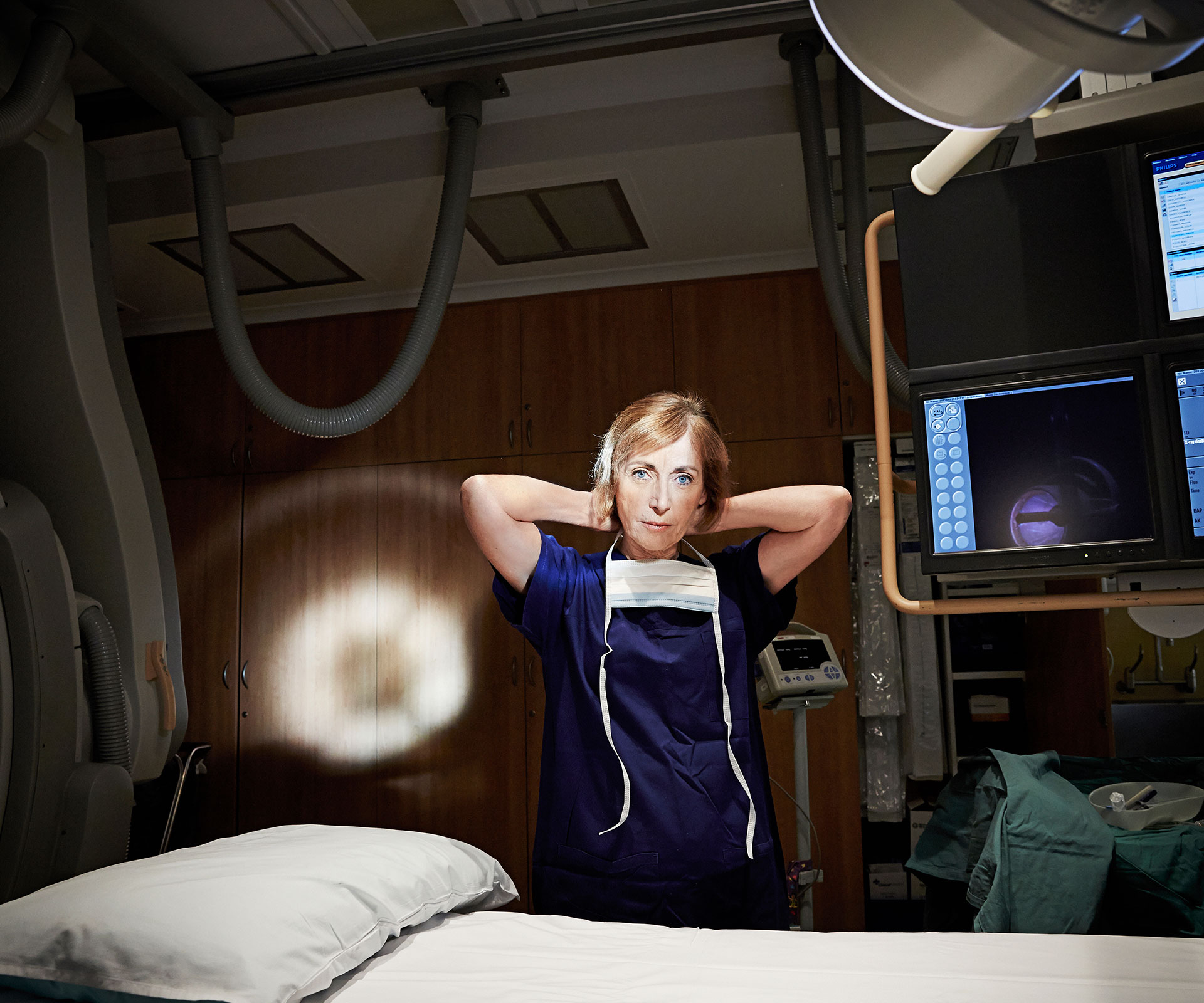It was 8.30pm on a freezing night in Melbourne, pitch black outside the windows of Bec Caskey’s home. The phone rang. She was required at work.
Bec was then a police diver, the first woman ever to join the Victoria Police Search and Rescue Squad in Australia, and she understood – indeed, expected – that she could be called up
at a moment’s notice to rescue people, or else to recover their bodies.
This case was particularly important. “They said a car had gone into a dam,” Bec says, “and children were inside.”
They were the Farquharson children: Jai, 10, Tyler, seven, and Bailey, two years old.
They had spent the day, September 4, 2005 – Father’s Day – with their dad, Robert Farquharson, who was supposed to return them home to their mum, Cindy Gambino, from whom he was separated. Instead, he drove into the dam and all the children drowned.
Bec’s recovery of the three boys – and the key role she played when the case came before the Supreme Court of Victoria – has now been captured in Helen Garner’s masterful new book, This House of Grief. Helen, who covered the case for eight years, writes, “It was a woman who finally got deep enough into the dam that night to find the car.”

The Farquharson children: Jai, 10, Tyler, seven, and Bailey, two years old.
That it was a woman is surprising, because when Bec joined Search and Rescue in 2000, the squad – formed in 1957 – had never had a female member. She trained for two years to pass the physical, telling no one what she was doing, just in case she didn’t make it through the test. “It wasn’t about breaking down that barrier,” says Bec, 43, “but, when I started training, I told people I was training for a triathlon, because, what if I didn’t make it? Now, I’m proud there is no barrier.”
The test was gruelling, but, after two years of training, Bec made it. She joined the squad and, because she was the first woman, the force had to scramble to accommodate her.
Like all squad members, Bec knew she would be required to conduct ‘vertical rescues’ of people stuck on a cliff face, for example, or ‘protestor extraction’, where people might padlock themselves to something like logging equipment.
A car going into a dam was not uncommon and Bec recalls arriving at the scene, off the motorway, to find that police had figured out where the car had gone into the water from tyre marks near the dam’s edge. By midnight, Bec was kitted up, and ready to go in.

Bec Caskey joined Search and Rescue in 2000.
In her book, Helen writes, “Compared with a farm dam, it was clean: there was no entangling vegetation. But the bottom was pure mud. The water was black and very cold. She [Bec] could not see at all.
A torch would have been useless in water so full of sediment.”
Blind in the darkness and gripped by cold, Bec went into the water and began to feel around. “She bumped into something with her head, something that moved,” writes Helen. “She touched it with her hand. It spun freely. A wheel.” On the witness stand, Bec “squeezed her eyes shut, put her long-fingered hands out in front of her, and mimed blind groping gestures up and down an imaginary wall.
“‘What was facing me,’ she said, ‘was the underside of the car. It was vertical.’”
The car had landed on its nose, and was balanced there, in the mud.
Bec felt her way around the car until she found the door on the driver’s side.
It was open. “Eyes shut and palms exposed, [Bec] mimed her fumbling search,” writes Helen.
“‘And then,’ Bec told the court, ‘I felt, slightly protruding from the car, a small person’s head.’ She cupped both hands before her face and delicately moved an imaginary object sideways.
“‘I pushed it back in,’ she said, ‘and I shut the door.’”

The three sons of Robert Farquharson were found in the wreck of their father’s car.
Helen’s description of Bec’s decision to push the little boy’s head back into the car is memorable. It was, she writes, an act of “tender reverse-midwifery”.
Bec tells us that she approached the task of locating the car and the children with calm professionalism. “You don’t want to be a person who loses it, when you’re asked to do a job like that,” she says.
“You want to be somebody who is calm, and capable. I don’t have children of my own. I have stepchildren, but they are older. Some of the guys, maybe, who had small children, might not have wanted to go in the dam that night, but it was my turn to go in, and so I went in, as professionally as I’d approach any job.
“I was not afraid of what I would find. I was concerned that the water was cold. It was pitch black, and the torch was useless. I knew I’d have to find the car with my hands, and then, when I found the car, it was upright, and I was concerned that it might move, and I would be on the underside of it. It was balancing on its nose. I did not want it rocking back and forth. So it was a careful operation, and I’m proud to have done it professionally.”

Crosses in remembrance of the boys who died in the dam.
Bec was grateful that none of the boys’ family members were present when she went into the water. “I have been on recovery jobs where, for example, family were on the banks of the river, waiting, and that can be stressful,” she says.
After locating the car, Bec returned to the surface, and “immediately began making notes. That is important, because, with this case, we already had a sense of something not being right, and I knew it would come before a court. I didn’t want my memory of the event to have faded in any way. That’s an important part of the job, too.”
She was still there when police winched the car out of the dam, and pulled it up, still full of water, to find three little boys inside: two in the back, and the one whose head she had touched in the front.
All three seatbelts, including the harness into which little Bailey, who was just two years old, was strapped, were undone, suggesting that the boys had lived for some time after the car went into the dam, and that one of the older ones – perhaps Jai – had tried to save the others.
Their father, Robert Farquharson, is now serving a life sentence, for murder.
Bec is proud of the role she played.
“I remember the job when I drive by the dam on the freeway,” Bec says, “but I’m not traumatised, or upset. “I was asked to do something important, and I did, the same as any other member of the squad.”
Words by: Caroline Overington
Photos: Alana Landsberry, Newspix, Fairfax, AAP and Courtesy of Victoria Police


